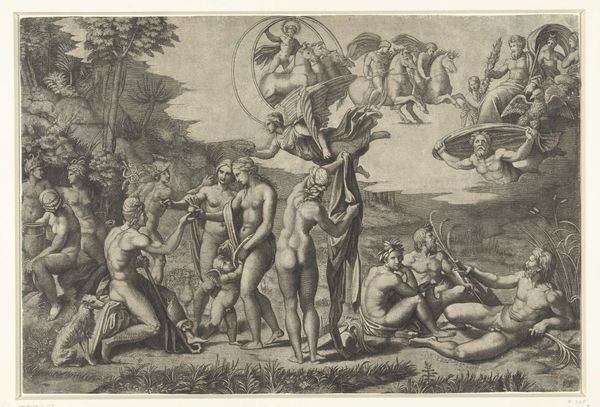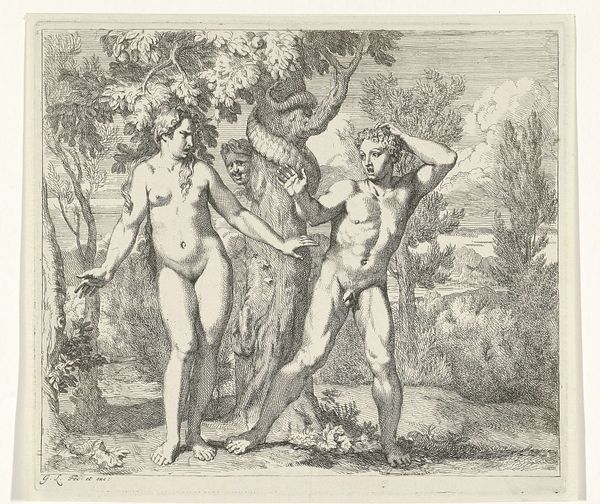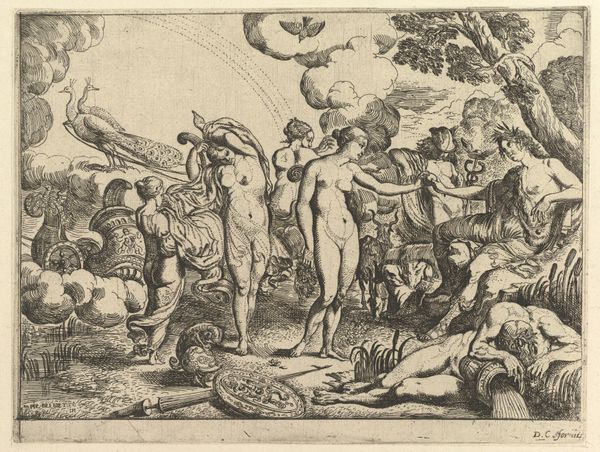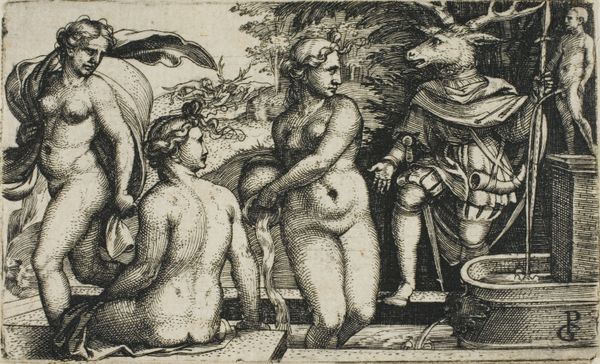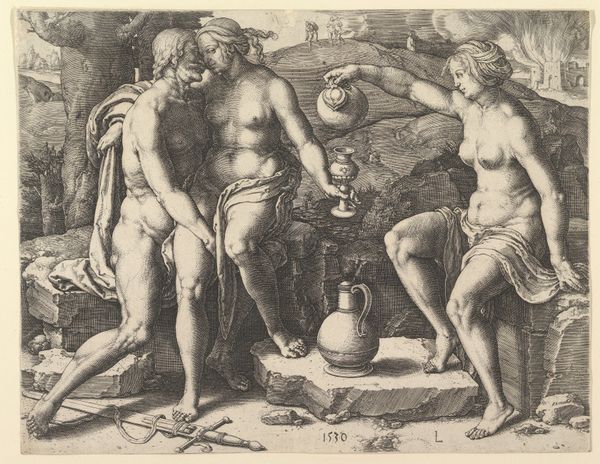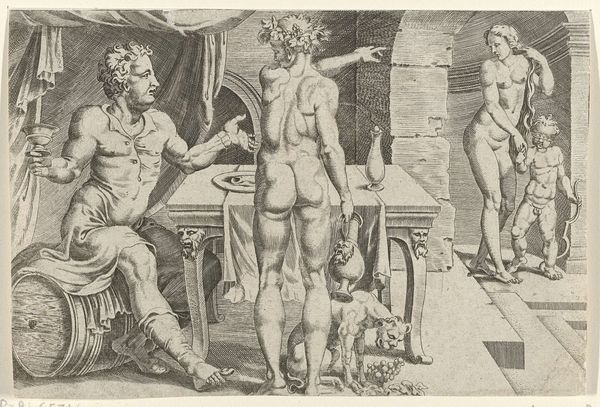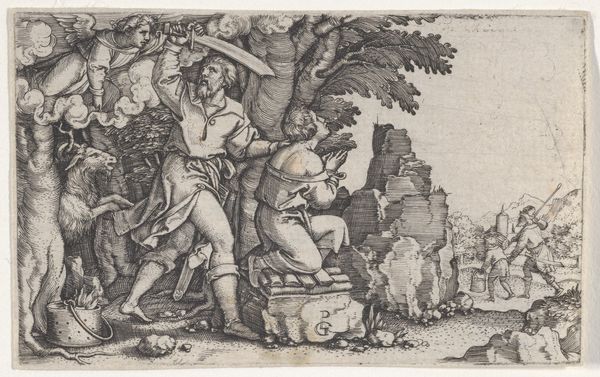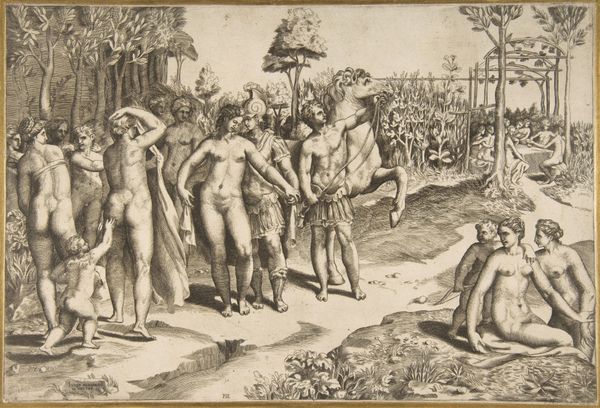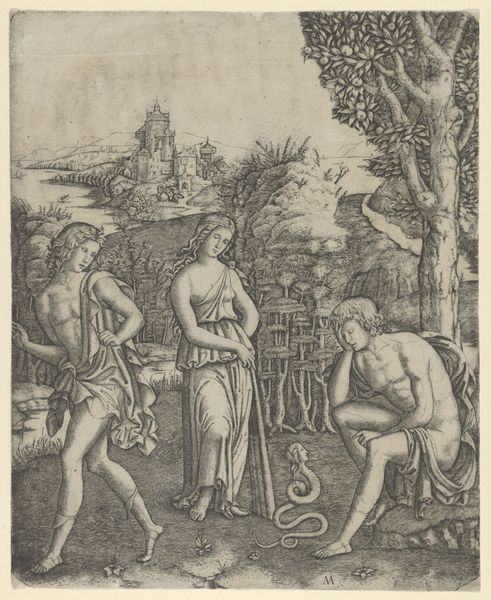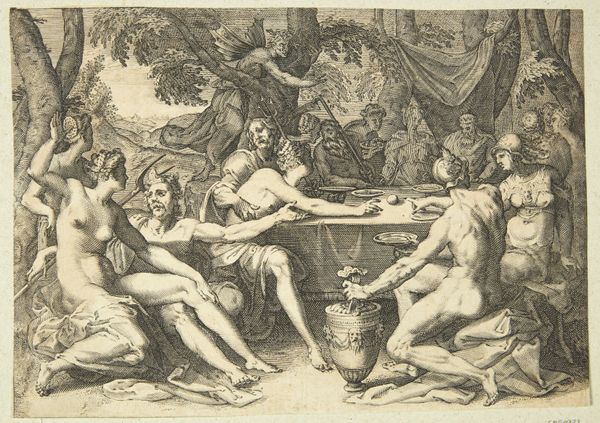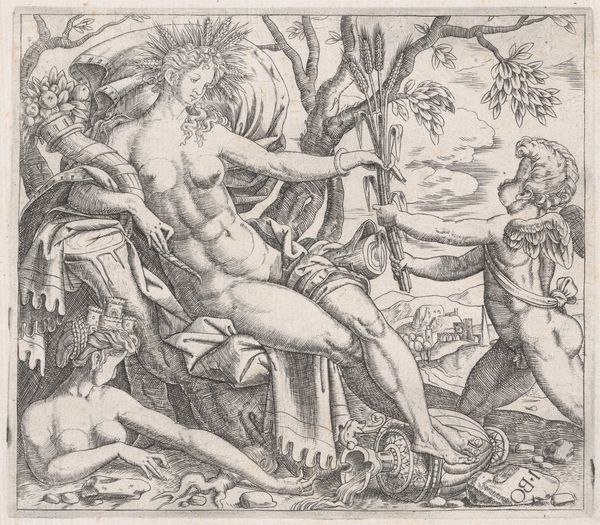
print, engraving
#
allegory
#
pen drawing
# print
#
figuration
#
11_renaissance
#
history-painting
#
italian-renaissance
#
nude
#
engraving
Dimensions: height 60 mm, width 84 mm
Copyright: Rijks Museum: Open Domain
Editor: This is "Dream of Paris" by Georg Pencz, created sometime between 1540 and 1542. It's an engraving, so a print, and it looks incredibly detailed. It has this surreal, almost unsettling atmosphere... Like a classical fever dream. What are your initial thoughts about the image? Curator: Well, it's interesting to consider the socio-political context in which Pencz was working. Printmaking at this time, particularly engravings, facilitated wider dissemination of images and ideas. What narratives were being circulated, and who controlled that circulation? The classical subject matter, specifically the Judgement of Paris, was often used to legitimize power through mythological allusions. Who benefits from representing Paris in this particular way? Editor: You mean, how it uses the old story to say something new? Curator: Exactly. This engraving reflects anxieties about decision-making, temptation, and the disruption of social order. Note the Cupid figure. What impact did interpretations of the classical Cupid have in Renaissance art? How did artists use or challenge accepted portrayals, to comment on power, desire, and morality? Editor: I hadn’t considered that. I was just focusing on the, well, the overt sexuality and wondering if that had something to do with why it’s in the Rijksmuseum collection! Curator: The nudity absolutely plays a role! It signifies vulnerability, but also status depending on the historical era. How does the artist use it to represent and influence the political power structures in place at the time? This era also struggled with the rise of the printing press; what would society and patrons make of seeing allegorical figures from classical myth on affordable prints? Editor: Wow, okay. There's a lot more going on here than just some nude ladies and a sleeping guy! Thinking about the historical context really opens up new ways to see it. Curator: Indeed. Considering the socio-political background reshapes our understanding of not just what is depicted but *why* it's depicted in this manner, which also suggests more about how it was perceived when first created.
Comments
No comments
Be the first to comment and join the conversation on the ultimate creative platform.
